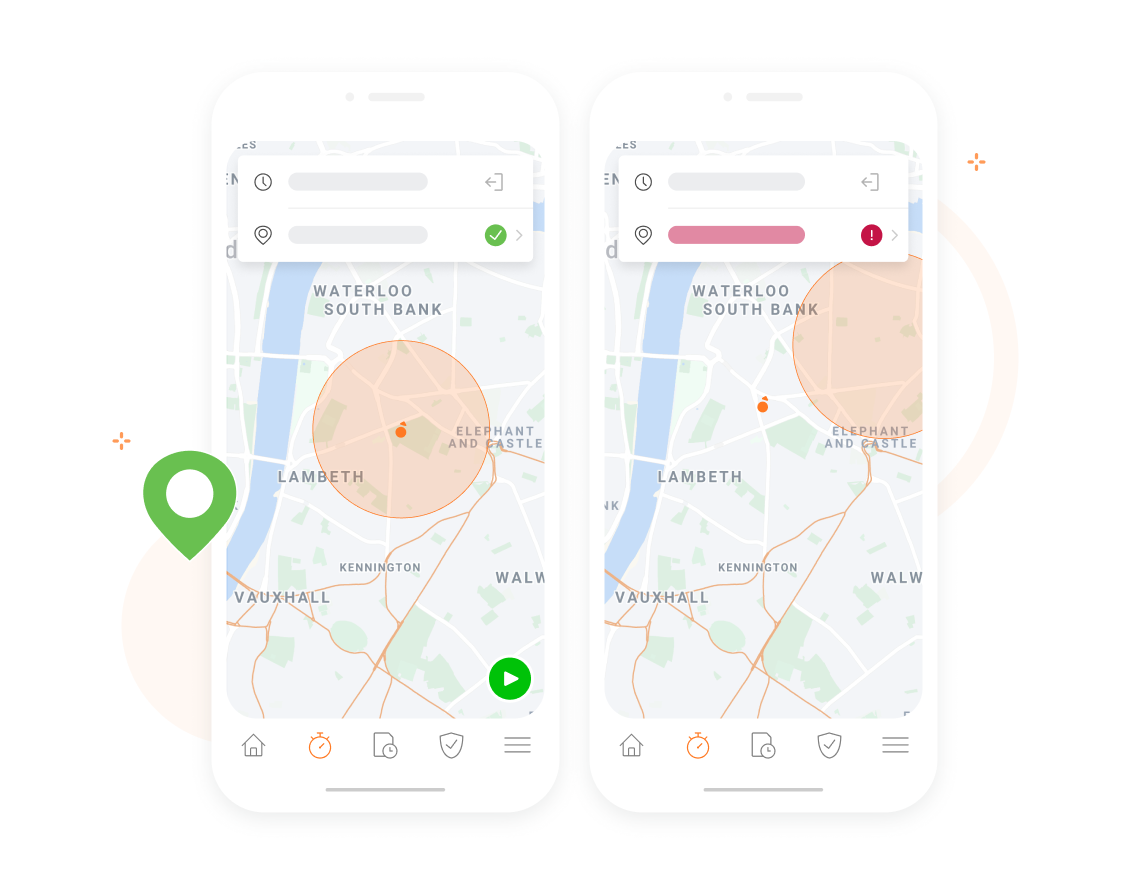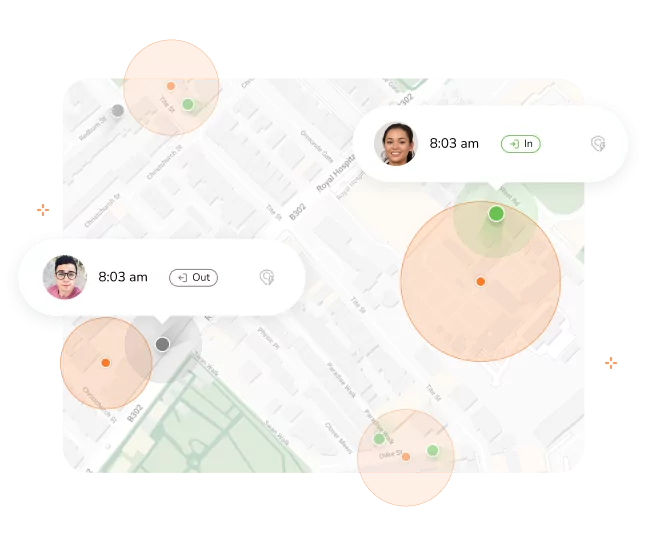Introduction
In today’s dynamic business landscape, remote work, flexible schedules and dispersed teams are becoming increasingly common.
This shift creates a challenge: how do businesses accurately track work hours in this evolving environment? The answer lies in a powerful technology called geofence automation, revolutionizing the way businesses track and manage their employees’ movements and activities.
What is Geofence Automation in Time Tracking?
Geofence automation is a technology that uses virtual boundaries and GPS location tracking to automatically track employee work hours.
Imagine creating an invisible boundary around a specific location. That’s essentially what geofencing does. In the context of time tracking, geofencing allows businesses to define specific geographic areas, such as office buildings, job sites, or client locations, as designated clock-in and clock-out zones.
These predefined geofenced areas are then used to trigger a response from the employee’s device. For example, when employees enter or exit a designated work zone (geofence), it automatically records their attendance, eliminating the need for manual timekeeping methods like paper timesheets or punch cards.
This technology, once reserved for GPS-enabled apps, has now found its way into time tracking tools, allowing businesses to automate clock ins and outs based on the movement of their employees while offering a wide range of benefits for employers and employees alike.

The Rise of Geofencing
One of the primary applications of geofencing is in time and attendance software. The rise of geofencing is a response to the limitations of traditional methods of logging worked hours, such as manual timesheets or punch cards. These methods are prone to errors and manipulation, with forgotten entries and buddy punching creating significant headaches for businesses. The escalating adoption of geofence technology is fueled by these concerns and several key factors:
- Increased Reliance on a Mobile Workforce: The rise of remote work and flexible schedules has necessitated a shift in how businesses monitor their employees. Geofencing attendance systems offer a way for employers to verify that employees are where they’re supposed to be, even when employees are physically dispersed.
- Demand for Data-Driven Decision Making: Businesses are hungry for data to make informed choices. Geofencing provides valuable insights into employee activity such as patterns and trends in employee movements. This data can be used for informed decision making, like optimizing scheduling, improving resource allocation, and identifying areas for process improvement.
- Task Automation for Streamlined Workflows: Geofencing can automate tasks, reducing the need for manual supervision and oversight. For example, employees can receive automated reminders or timer actions such as clocking in when they enter specific work areas.
Geofencing is all about using technology to make work life smoother for everyone. As businesses continue to embrace digital transformation, the adoption of geofencing technology is expected to accelerate, leading to even more innovative applications in workforce management.
How Automatic Geofence-Based Clock-In and Out Works
Automatic geofence-based clock-in and out systems leverage the power of location-based technology to streamline time and attendance tracking for businesses. Here’s a brief breakdown of how these systems work:
- Geofence Creation: The process begins with the creation of geofences around specific locations such as workplaces or job sites. These geofences are typically established using GPS coordinates and can be customized to suit the unique needs of each business.
- Employee Recognition: When employees enter or exit the geofenced areas, their mobile device automatically detects the change in location. The system then verifies their presence within these zones.
- Automated Clock-Ins/Clock-Outs: Upon successful verification of the employee’s location within the geofenced area, the system automatically records the timestamp, registering either a clock-in or clock-out event.
- Real-Time Data Transmission: The recorded time data is transmitted in real-time to the central time tracking system, where it is stored securely for payroll processing or compliance reporting.
- Notifications and Alerts: Geofence-based time tracking systems can also be configured to send notifications or alerts to managers or supervisors when employees enter or exit the geofenced areas, providing real-time visibility into workforce movements.
Benefits of Geofence Automation
Geofence automation offers a wave of benefits for both employers and employees, making timekeeping a breeze.
For Employees:
- Effortless Timekeeping: With the assurance that their time entries accurately reflect their actual attendance, employees can focus on their work without worrying about inaccuracies or disputes over hours worked.
- Flexibility for Modern Workstyles: The beauty of geofence automation lies in its adaptability. Whether you work remotely, have a flexible schedule, or travel for work, geofencing tracks your work hours regardless of location.
- Transparency and Accountability: Geofencing promotes a sense of accountability as employees are required to be physically present at the designated work locations. This fosters a culture of transparency between employers and employees, leading to improved job satisfaction and morale.
For Employers:
- Goodbye, Buddy Punching: Traditional methods like punch cards can be vulnerable to buddy punching and payroll errors (clocking in for someone who isn’t present). Geofencing offers a secure and reliable way to track work hours, eliminating these concerns and safeguarding against potential revenue losses.
- Streamlined Workflows: Automated clock-ins and outs save valuable time and resources. No more manual data entry or chasing down missing timesheets.
- Enhanced Visibility into Operations: With real-time insights into employee attendance and whereabouts, geofencing allows for proactive intervention in case of any deviations from the schedule.
- Data-Driven Decisions: Geofencing provides valuable insights into employee work patterns and trends. This data can be used to optimize schedules, improve resource allocation, and make informed decisions to drive business success.

Final Thoughts
In conclusion, the rise of automated geofenced clock-ins represents a significant shift in time and attendance management. This innovative technology offers a solution that is both secure and adaptable, catering to the needs of a modern and flexible work landscape.
By eliminating manual timekeeping hassles and providing valuable data insights, geofencing paves the way for a more accurate, efficient, and data-driven future for tracking employee attendance and work hours.



